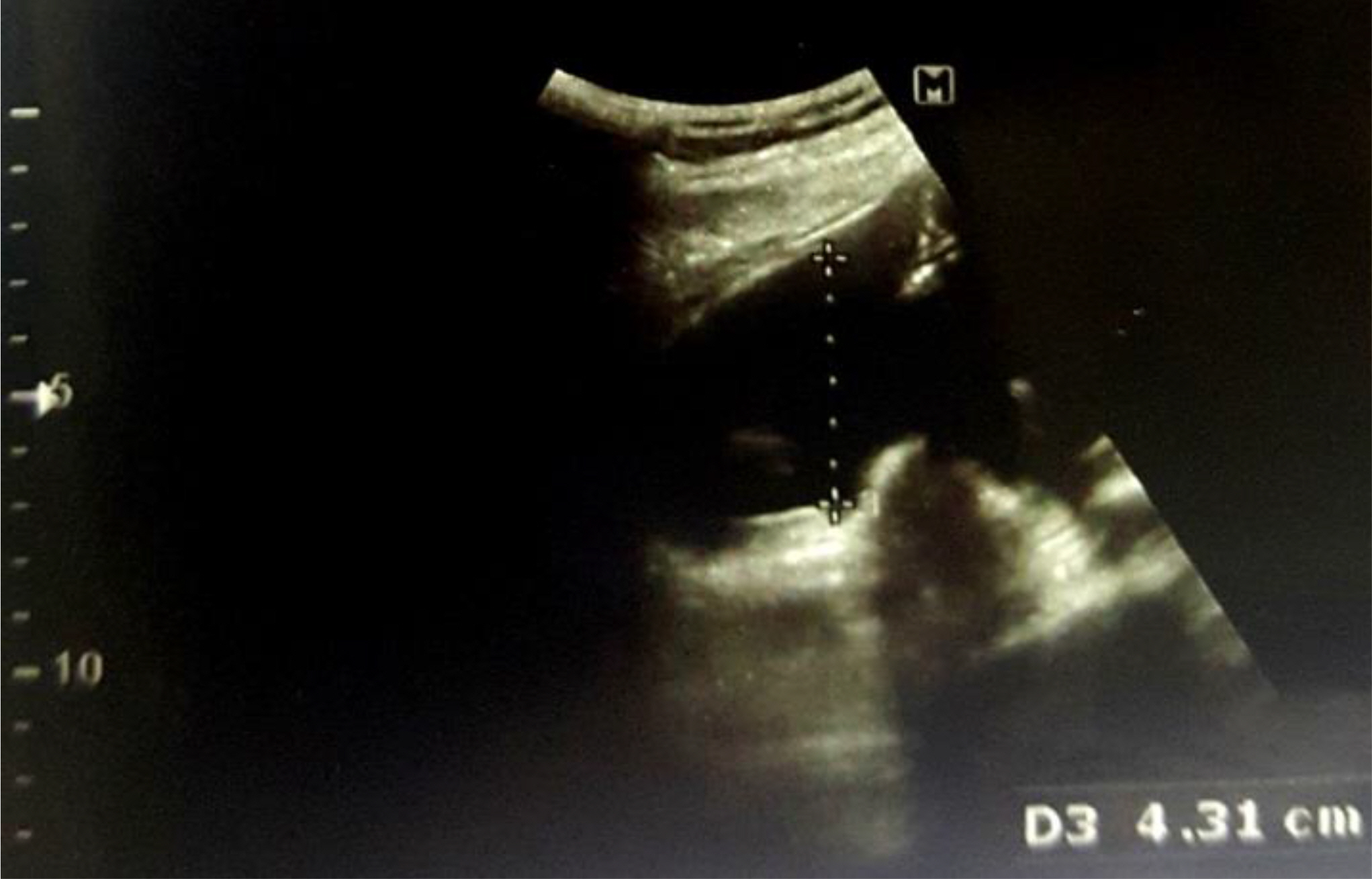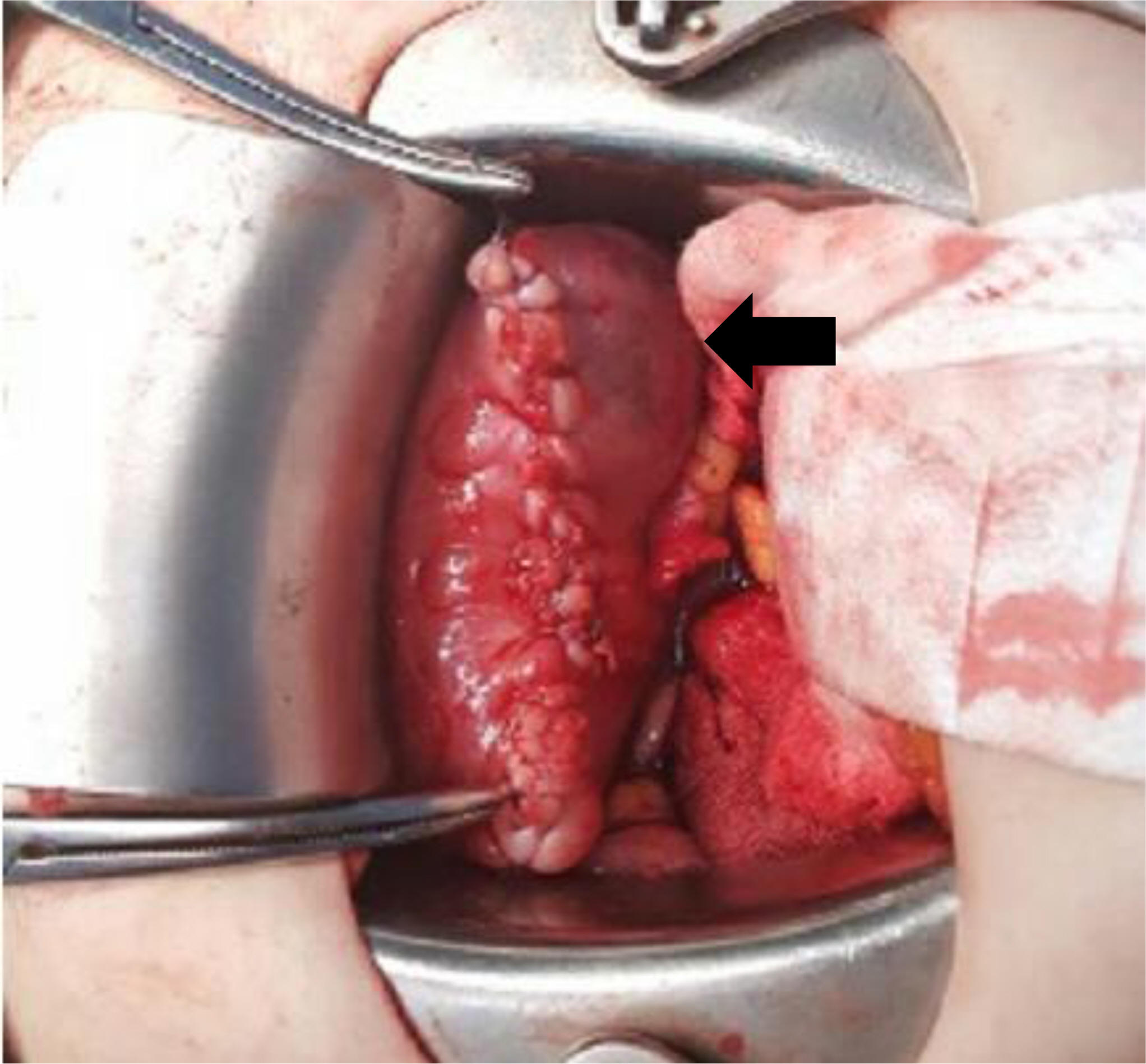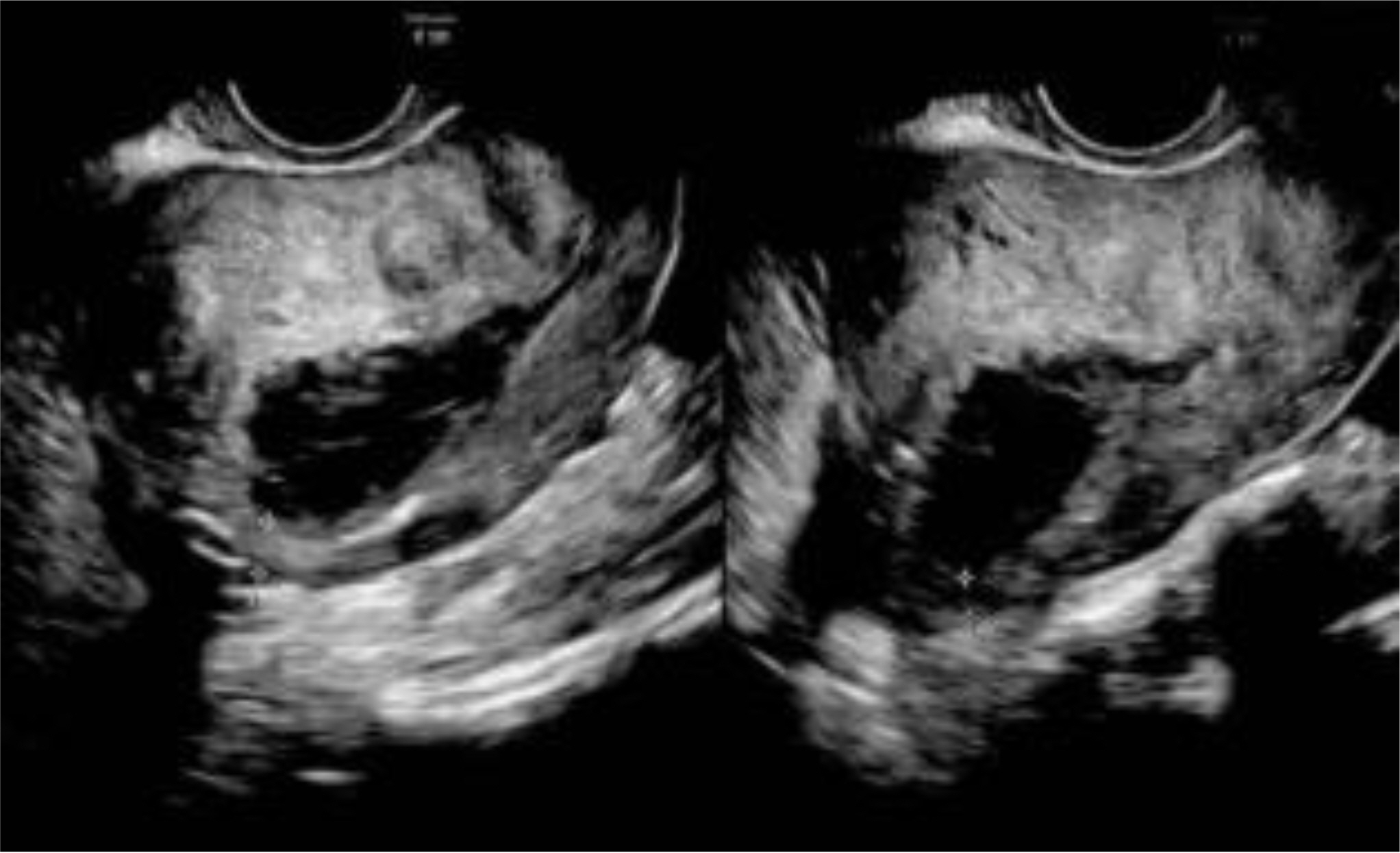Perinatology.
2018 Dec;29(4):195-197. 10.14734/PN.2018.29.4.195.
Spontaneous Uterine Rupture after Uterine Artery Embolization for the Treatment of Uterine Myomas
- Affiliations
-
- 1Department of Obstetrics and Gynecology, Chonnam National University Medical School, Gwangju, Korea. kimyh@jnu.ac.kr
- KMID: 2430225
- DOI: http://doi.org/10.14734/PN.2018.29.4.195
Abstract
- As intervention techniques have been developed recently, minimal invasive treatment for uterine myoma using uterine artery embolization is receiving attention increasingly. Uterine rupture occurs rarely, but once it occurs, it may cause fatal results in both mother and fetus. Although the relationship between uterine artery embolization for treatment of uterine myoma and uterine rupture has not been clearly revealed yet, a case implying that the embolization for treatment of uterine myoma can be a risk factor of uterine rupture like previous caesarian delivery or myomectomy.
MeSH Terms
Figure
Reference
-
1). Al-Zirqi I., Daltveit AK., Forsén L., Stray-Pedersen B., Vangen S. Risk factors for complete uterine rupture. Am J Obstet Gynecol. 2017. 216:165. .e1-8.
Article2). Committee on Gynecologic Practice, American College of Obstetricians and Gynecologists. ACOG Committee Opinion. Uterine artery embolization. Obstet Gynecol. 2004. 103:403–4.3). Society of Obstetricians and Gynecologists of Canada. SOGC clinical practice guidelines. Uterine fibroid embolization (UFE). Number 150, October 2004. Int J Gynaecol Obstet. 2005. 89:305–18.4). You SH., Chang YL., Yen CF. Rupture of the scarred and unscarred gravid uterus: outcomes and risk factors analysis. Taiwan J Obstet Gynecol. 2018. 57:248–54.
Article5). Milazzo GN., Catalano A., Badia V., Mallozzi M., Caserta D. Myoma and myomectomy: poor evidence concern in pregnancy. J Obstet Gynaecol Res. 2017. 43:1789–804.
Article6). Redecha M Jr., Mižičková M., Javorka V., Redecha M Sr., Kurimská S; S., Holomáň K. Pregnancy after uterine artery embolization for the treatment of myomas: a case series. Arch Gynecol Obstet. 2013. 287:71–6.
Article7). Yeaton-Massey A., Loring M., Chetty S., Druzin M. Uterine rupture after uterine artery embolization for symptomatic leiomyomas. Obstet Gyne-col. 2014. 123(2 Pt 2 Suppl 2):418–20.
Article8). Takeda J., Makino S., Ota A., Tawada T., Mitsuhashi N., Takeda S. Spontaneous uterine rupture at 32 weeks of gestation after previous uterine artery embolization. J Obstet Gynaecol Res. 2014. 40:243–6.
Article9). Homer H., Saridogan E. Uterine artery embolization for fibroids is associated with an increased risk of miscarriage. Fertil Steril. 2010. 94:324–30.
Article
- Full Text Links
- Actions
-
Cited
- CITED
-
- Close
- Share
- Similar articles
-
- A case of uterine artery embolization for treatment of huge uterine myoma
- Spontaneous Restoration of Unrecognized Uterine Inversion
- A Case of Uterine Fibroids Necrosis after Transarterial Embolization for Treatment of Uterine Fibroids
- Fatal pulmonary thromboembolism after uterine artery embolization for uterine myoma: A case report
- Successful management of cesarean scar pregnancy at 13 weeks of gestation by uterine artery embolization: A case report




